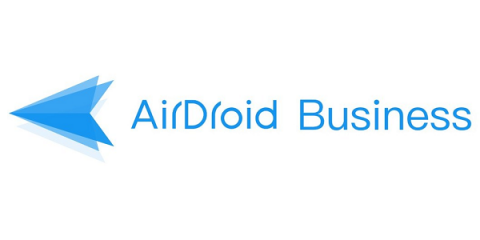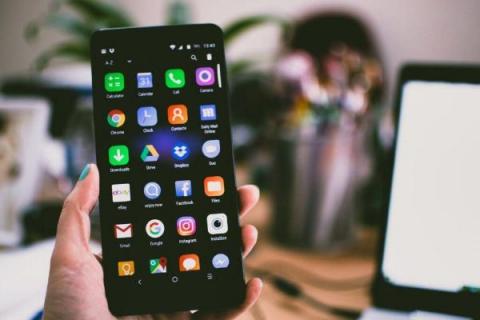Operations | Monitoring | ITSM | DevOps | Cloud
May 2023
Can Vingo App Work In Isolated Places?
A Comprehensive Guide to Geofencing in Healthcare
Location-based marketing has been around for a while. Marketers have used ZIP codes to send personalized marketing messages to target audiences. However, these tactics are limited. For example, you can’t trigger ads in real-time or at the moment of highest intent. But what if you could target the right customers at the right place and time? Enter geofencing.
What Is Mobile Device Management (MDM)?
With remote work and bring your own device (BYOD) practices on the rise, mobile device management (MDM) has become a necessity. Using mobile device management, IT teams are able to control, secure, and manage mobile devices, such as smartphones, laptops, and tablets. In this mobile device management (MDM) overview, we will discuss what MDM is, its importance in the IT world, and best practices to follow.
Windows MDM: A Complete Guide
At the moment, Microsoft Windows is the most popular operating system in the U.S., with a market share of 32.63%. Due to the rising bring your own device (BYOD) trends and an increase in remote work, many employees are now using remote Windows devices to access organizational data and carry out business tasks. To protect confidential data and secure these remote devices, organizations depend on Windows mobile device management (MDM).
Mac MDM: What You Need To Know
The Apple vs. Android conversation has been an ongoing debate for years, and it isn’t coming to a conclusion anytime soon. Some businesses choose to use only Android or Apple devices, while others prefer to mix the two. Whether your organization uses Android or Apple, one fact is clear: your IT team will need mobile device management (MDM) to secure and manage your remote devices.
What Is Apple & iOS MDM?
Stanford’s monthly research on working from home reported nearly 13% of full-time employees are working remotely, while about 28% of other full-time employees are in a hybrid workplace, totaling about 41% of the workforce that works remotely at least part of the time.
How To Monitor Mobile Game Application Performance
As a mobile game developer, there are many components of your game that you need to monitor. Everything from the servers that are hosting your game, to your best players, and your best-converting actions. That’s a lot of data, and it’s hard to know how to get the most out of that data. This article will look at the KPIs (Key Performance Indicators) you need to monitor, the best tools for monitoring these metrics, and how to handle this data in the most effective way.
Introducing the Upgraded AirDroid Remote Support 2023: Secure & Powerful for Unattended Devices
iPhone Security Settings to Protect Your Online Privacy
The Future of Selling Your Cars Is Now: How Mobile Apps Are Changing the Car Sales Industry
The Importance of HIPAA Compliance in Business App Development
Facing the FinTech: How Remote Support Can Help Banks Compete
Banks are facing stiff competition from FinTech firms. When most people think of this head-to-head battle, they likely assume that the differentiator is technology. The banks have legacy solutions, while the FinTech firms have newer innovations. While this framing is accurate, it does not give the full picture. FinTech firms are not only turning to new technology for the sake of new technology – they are doing so in service of what matters the most in their industry: customer service.
What Android Enterprise means for MDM
With over 2.5 billion users, Android enjoys a dominant 85% market share in the mobile operating space. It does have one glaring weakness however: enterprise. Most businesses still favor iOS, the operating system of Apple devices like the iPhone and iPad. As part of Google’s bid to secure more of the enterprise market, Android Enterprise is a software platform that provides application programming interfaces (APIs) to developers who build MDM solutions.
How MDM Can Protect Against Generative AI Mishaps on Digital Displays
Generative artificial intelligence (AI) is defining 2023. Numerous tech companies, including OpenAI and Google, have put out large language models (LLM) that can be used by consumers directly, or integrated into other products via an application programming interface (API). Many companies are rushing to include generative AI into new or existing products. Some are even doing so in customer touchpoints, such as digital kiosks.
Best Digital Signage Growth Guide for Small Businesses
One of the aspects we appreciate about digital signage is that it promotes fairness. Unlike social media, pay-per-click (PPC), and online advertising, where coverage is often determined by budget, digital signage allows businesses of all sizes to compete equally. With digital signage, the cost of setting up and rolling out is determined by the number of screens you use rather than the number of competing companies. Digital signage is a versatile tool that anyone can easily set up.
POS Security: How to Protect Your Android POS Systems
The adoption of POS devices across industries is advancing, fast! Businesses including restaurants, grocers, and retail stores are seeing POS devices as a multi-functional hub that offers menu creation, tableside ordering, employee management, CRM, inventory management, and more. According to statistics, 59% of retailers made focusing on omnichannel capabilities their top POS priority in 2020.
The Advantages and Challenges of Remote Teams: A Comprehensive Guide
The global COVID-19 pandemic ushered in a new era of remote work. The Pew Research Center reports that over 71% of people had transitioned to working from home at the height of the pandemic. As of 2023, that number is still relatively high, with 59% of workers remaining at home though social distancing restrictions have long been relaxed. As remote work becomes increasingly common, many managers are considering transitioning to the new model.

















